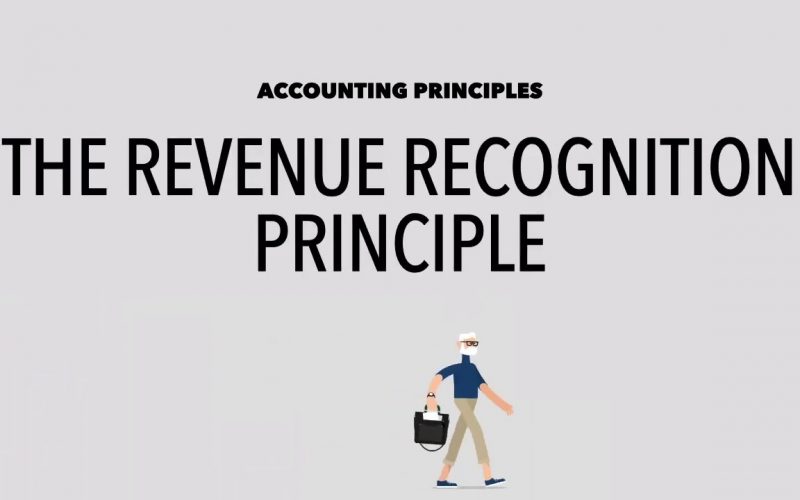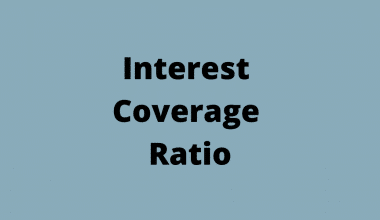As we saw in our last post, revenue recognition is an accounting principle that states the criteria under which revenue is recognized. So, in this article, we’ll go through what the revenue recognition principle is, GAAP, how the laws have recently changed, and how to ensure you’re doing it correctly.
What Is Accounting Revenue Recognition Principle?
According to the Generally Accepted Accounting Principle (GAAP), revenue recognition is the condition in which revenue is recognized and provides a principle to account for it and financial statements when utilizing the accrual foundation of accounting, which is needed for all public firms. Enterprises that use the cash foundation of accounting, such as many small businesses, are not required to adhere to this principle while recording revenue.
In general, the revenue recognition principle states that revenue is recognized when a significant event occurs and the monetary value is easily quantifiable. The revenue recognition principle is made to appear easier than it is by GAAP.
Understanding Revenue Recognition Principle in accordance with GAAP
Revenue is what keeps businesses running because everything is related to the sale. Hence, regulators are well aware of how some businesses may be motivated to push the boundaries of what constitutes revenue. This is especially true if not all of the revenue is collected as the work is completed. Attorneys, for example, bill their clients in billable hours and send an invoice once the task is completed. Construction managers frequently bill their clients based on a percentage of completion.
When a product is sold and the revenue is recognized as the customer pays for the product. Revenue accounting is quite simple. However, when it comes to revenue accounting when a company takes a long time to develop the product, things can get difficult. As a result, there is a range of scenarios where exceptions to the revenue recognition principle exist.
Financial analysts prefer that one company’s revenue recognition procedures be the industry norm since it ensures an even comparison between two companies. It facilitates the evaluation of income statement line items. Revenue recognition principles should remain consistent within an organization over time. This is to ensure that historical finance may be easily evaluated and reviewed for inconsistencies for seasonal trends.
The principle of revenue recognition is a characteristic of accrual accounting.
Principles of Revenue Recognition Under GAAP
The Financial Accounting Standards Board (FASB), which establishes U.S. GAAP standards, has established the following five revenue recognition principle:
- Determine the customer contract
- Determine the customer contract’s duties.
- Establish the transaction price.
- Allocate the transaction payment in accordance with the contract’s performance obligations.
- When the performance obligations are met, revenue is recognized.
Methods of Revenue Recognition
When it comes to revenue recognition systems, businesses have various possibilities. The important thing to remember is that once a revenue recognition technique is adopted, the company must stick with it.
#1. Method of Sales Basis
Revenue is recognized at the time of sale when using the sales-based revenue recognition technique. The sale is defined as the time when goods and services exchange hands, which may or may not occur concurrently with payment.
For example, if a consumer makes an upfront payment before receiving the product, the revenue is not recognized until the product is delivered.
#2. Method of Completion Percentage
The completion method, often known as the percentage of completion method, is most commonly employed in long-term projects. This strategy is used by any service, such as construction or engineering. These service providers must be able to demonstrate that they are collecting revenue despite the fact that their projects are not fully completed.
This approach is only applicable if both of the following conditions are met:
- There is a long-term contract in place that is legally binding.
- The project is designed in such a way that the percentage of completion may be calculated for revenue and expense distribution.
There are two ways to compute the percentage of completion method:
- Revenue can be recognized at particular milestones. This could be a set number of pages on a website or a number of square feet on a building.
- It can also be calculated on the basis of cost. For example, if a company expects its costs to be $1,000,000 and has received $400,000, the project is deemed 40% complete.
True, this revenue recognition approach provides firms with an alternative for long-term contracts, but it is simple to inflate revenues if the timing of expenses and task completion is not correctly aligned.
#3. Method of Contract Completion
When a company employs the completed contract technique, revenue is recognized only when the project is done and the contract is fully fulfilled. This strategy can be used for both revenue and expenses. When the requirements of the percentage of completion method cannot be met, this revenue recognition principle is employed. For instance, if the contract is not legally enforceable or the completion percentage cannot be computed.
Because revenue isn’t recognized until the project is finished, the completed contract technique risks underreporting revenue when it’s generated and overstating revenue when it’s recognized.
#4. Method of Cost Recovery
Businesses that employ this system approach revenue recognition in a completely different way. Rather than recording revenue and offsetting it with expenses, the cost recovery ability method does not record any revenue until all project costs have been accounted for. This approach has the ability to understate revenue in the early stages while overstating revenue later on.
#5. Method of Payment
The installment approach is usually the best option for businesses that cannot rely on their customers’ ability to pay on time or the collectability of the money. This method only reports revenue after the payment has been received.
For example, if a car is sold on an installment plan for $10,000, the revenue is only recorded when the payment is received. Only the $2,000 down payment is recorded if it is made at the time of the initial transaction. Each payment generates revenue that is then offset by associated costs.
ASC 606 Accounting Standards Codification
On May 14, 2014, the Financial Accounting Standards Board (FASB) and the International Accounting Standards Board (IASB) collaborated to produce ASC 606. It is comparable to, but not identical to, the International Financial Reporting Standards (IFRS) 15.
This codification deals with revenue from client contracts. It establishes a consistent methodology for enterprises to use when recognizing revenue from contracts. The previous guidance was industry-specific, resulting in a number of disparate policies. The improved revenue recognition standard is more transparent and industry-neutral.
The upgrade ensures that financial statements with uniform revenue recognition processes may be successfully compared across industries.
Steps to Comply with the New Revenue Recognition Principle
Businesses must follow five procedures to comply with the new revenue recognition principle. The procedure is as follows:
- Determine the customer’s contract.
- Determine the contractual performance responsibilities.
- Then determine the quantity of consideration or the transaction’s price.
- Distribute the agreed-upon amount of payment or price to the contractual duties.
- When the performing party fulfills the performance obligation, revenue is recognized.
How does the revenue recognition principle affect businesses?
Because revenue is recorded when it is produced rather than when it is received, the revenue recognition principle allows your company to accurately reflect profit and loss.
Using the revenue recognition principle also helps with financial forecasting, allowing your company to project future revenues more precisely. Recognizing revenue correctly is especially critical for organizations that get payment in advance of services, such as service contracts that require payment in advance.
To properly recognize revenue, any business that gets payment in advance for services to be given must record that revenue only when the services are completed. For example, if you sell a yearly support contract to revenue for $12,000 a year, you will earn $1,000 per month for the next 12 months.
Revenue Recognition Principles FAQ’s
How do you calculate revenue recognition?
To calculate the total amount of revenue that can be recognized, multiply the total estimated contract revenue by the estimated completion percentage. Subtract the total amount of revenue that can be recognized from the contract revenue recognized to date through the preceding quarter.
When can I recognize revenue?
According to the principle, revenues are recognized when they are realized or realizable and earned (often when things are transferred or services are given), regardless of when cash is received.
How many revenue recognition methods are there?
A corporation can employ one of five major methods for revenue recognition.
Related Articles
- Revenue Recognition: How GAAP & ASC 606 Works
- GAAP vs IFRS: Revenue Recognition, Balance Sheet & Other Differences
- IFRS (International Financial Reporting Standards) List, Requirements, Compliance & Benefits
- What are the Generally Accepted Accounting Principles: All You Need
- GAAP: Overview, Importance, History, Limitations






